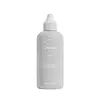What's inside
What's inside
 Key Ingredients
Key Ingredients

No key ingredients
 Benefits
Benefits

 Ingredients Side-by-side
Ingredients Side-by-side

Water
Skin ConditioningPentylene Glycol
Skin ConditioningCamellia Sinensis Leaf
PerfumingGlycerin
HumectantSodium Hyaluronate
HumectantHydrolyzed Hyaluronic Acid
HumectantHyaluronic Acid
HumectantPropanediol
SolventBetaine
HumectantXanthan Gum
EmulsifyingArtemisia Annua Extract
MaskingCamellia Sinensis Leaf Extract
AntimicrobialAzadirachta Indica Leaf Extract
Skin ConditioningPolyglutamic Acid
Skin ConditioningCitric Acid
BufferingGlyceryl Caprylate
EmollientCentella Asiatica Extract
CleansingSqualane
EmollientWater, Pentylene Glycol, Camellia Sinensis Leaf, Glycerin, Sodium Hyaluronate, Hydrolyzed Hyaluronic Acid, Hyaluronic Acid, Propanediol, Betaine, Xanthan Gum, Artemisia Annua Extract, Camellia Sinensis Leaf Extract, Azadirachta Indica Leaf Extract, Polyglutamic Acid, Citric Acid, Glyceryl Caprylate, Centella Asiatica Extract, Squalane
Ingredients Explained
These ingredients are found in both products.
Ingredients higher up in an ingredient list are typically present in a larger amount.
Citric Acid is an alpha hydroxy acid (AHA) naturally found in citrus fruits like oranges, lemons, and limes.
Like other AHAs, citric acid can exfoliate skin by breaking down the bonds that hold dead skin cells together. This helps reveal smoother and brighter skin underneath.
However, this exfoliating effect only happens at high concentrations (20%) which can be hard to find in cosmetic products.
Due to this, citric acid is usually included in small amounts as a pH adjuster. This helps keep products slightly more acidic and compatible with skin's natural pH.
In skincare formulas, citric acid can:
While it can provide some skin benefits, research shows lactic acid and glycolic acid are generally more effective and less irritating exfoliants.
Most citric acid used in skincare today is made by fermenting sugars (usually from molasses). This synthetic version is identical to the natural citrus form but easier to stabilize and use in formulations.
Read more about some other popular AHA's here:
Learn more about Citric AcidWater. It's the most common cosmetic ingredient of all. You'll usually see it at the top of ingredient lists, meaning that it makes up the largest part of the product.
So why is it so popular? Water most often acts as a solvent - this means that it helps dissolve other ingredients into the formulation.
You'll also recognize water as that liquid we all need to stay alive. If you see this, drink a glass of water. Stay hydrated!
Learn more about WaterXanthan gum is used as a stabilizer and thickener within cosmetic products. It helps give products a sticky, thick feeling - preventing them from being too runny.
On the technical side of things, xanthan gum is a polysaccharide - a combination consisting of multiple sugar molecules bonded together.
Xanthan gum is a pretty common and great ingredient. It is a natural, non-toxic, non-irritating ingredient that is also commonly used in food products.
Learn more about Xanthan Gum